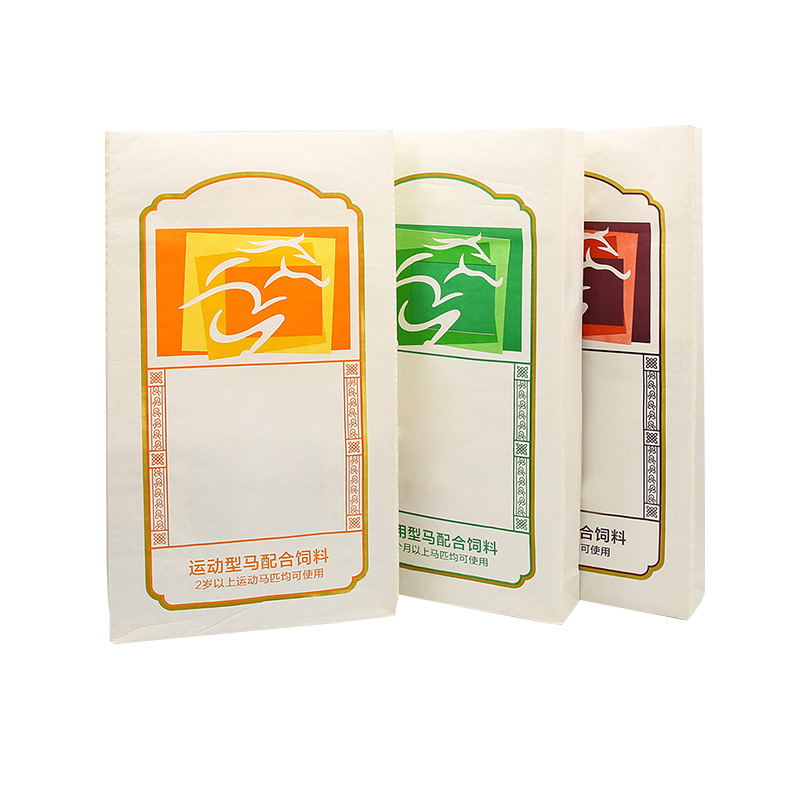1. Material type selection
Paper-bottomed bag
It adopts a three-layer kraft paper structure, with the outer layer being bleached wood pulp paper (120-200g/m²). It has better air permeability than woven bags, but weaker waterproofness, and requires moisture-proof storage measures.

Woven seam bottom/pasted bottom bag
Polypropylene (PP) woven bags can bear up to 150kg, and their wear resistance is 40% higher than that of paper bags. They are recommended for long-distance transportation scenarios; pasted bottom woven bags have better sealing properties and can reduce the risk of cement spillage.
Composite film bulk bag
It adopts PE/PP composite film technology (thickness ≥0.15mm), which is suitable for ton-level bulk transportation and can reduce packaging costs by more than 35%.
When selecting the appropriate material for packaging, it is important to consider not only the load capacity but also the environmental impact and handling requirements. For many industrial and commercial applications, eco friendly shipping packaging has become a priority, and companies are increasingly choosing materials that balance durability with sustainability. Each type of bag offers unique advantages depending on the product type, transportation distance, and storage conditions.
White woven polypropylene bags are widely used for their strength and wear resistance. These bags are capable of supporting heavy loads, often up to 150 kilograms, making them suitable for transporting construction materials, grains, and other bulk goods. The woven structure provides reliable tear resistance and allows for repeated handling without significant damage. Additionally, these bags are compatible with printing and labeling, which means they can display important product information or branding clearly. Many companies also use kraft bags with logo as an alternative for applications where visual presentation is important. Kraft bags combine a natural, rustic appearance with sufficient strength for moderate loads and can be customized with logos, product names, or instructions, enhancing brand visibility while maintaining environmental responsibility.
In addition to these options, composite film bulk bags provide a solution for high-volume or ton-level transportation. Using PE/PP composite film technology with a thickness of 0.15mm or more, these bags are highly resistant to moisture and spillage, reducing the risk of material loss during transit. The lightweight yet durable nature of composite film packaging also contributes to reduced transportation costs, as shipping weight is lowered compared to heavier paper or woven alternatives. This type of bag is particularly suited for industrial sectors such as cement, chemicals, and fertilizers, where maintaining the integrity of bulk materials is critical.
Storage and handling considerations are essential regardless of the bag type. Paper-based packaging, including kraft bags with logo, should be stored in dry conditions to prevent weakening of the material. While paper-bottomed bags offer improved air permeability, they are more susceptible to moisture and require careful stacking and storage measures. In contrast, white woven polypropylene bags are less sensitive to environmental conditions and can be stored outdoors for short periods, making them versatile for both warehouse and distribution use. Composite film bags also offer high protection against environmental factors, making them suitable for both long-distance transportation and extended storage.
Another factor to consider is the recyclability and environmental impact of the chosen packaging. Eco friendly shipping packaging options are gaining traction across industries as regulations and consumer preferences shift toward sustainability. Paper and composite materials can often be recycled or reused, reducing waste in supply chains. Woven polypropylene bags, while durable, can also be repurposed or recycled when handled correctly, supporting circular economy practices. Choosing the right packaging material ensures not only the safety of the product but also contributes to broader environmental goals, which can be a decisive factor in supply chain decisions.
Ultimately, understanding the specific requirements of the product, including weight, moisture sensitivity, and transportation conditions, will guide the selection of the more suitable packaging type. By combining white woven polypropylene bags, kraft bags with logo, and composite film bulk bags where appropriate, companies can create a flexible, cost-effective, and environmentally responsible packaging strategy that meets both operational needs and sustainability objectives.


 English
English Español
Español عربى
عربى
